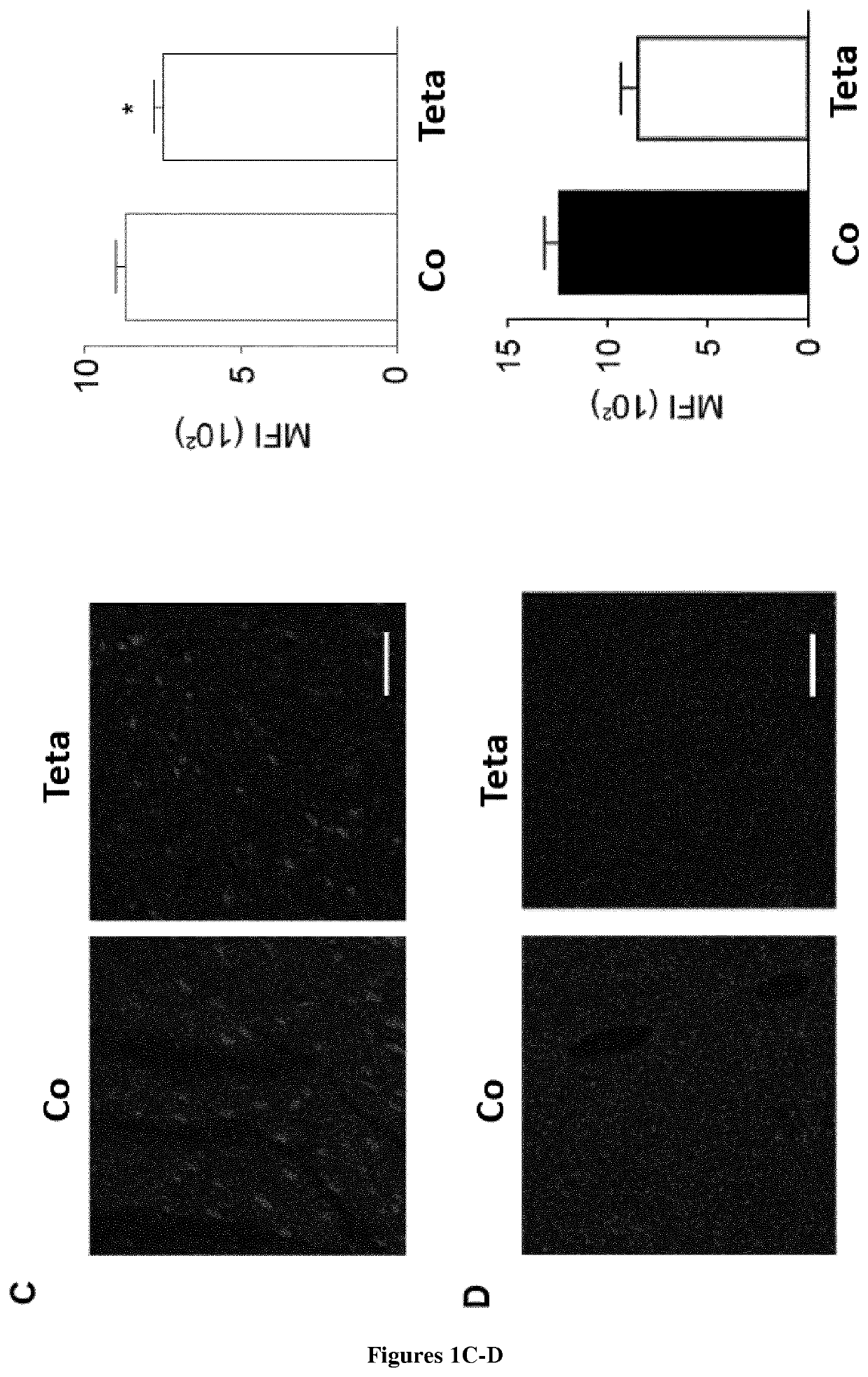Use of triethylenetetramine (TETA) for the therapeutic induction of autophagy
a technology of triethylenetetramine and autophagy, which is applied in the direction of antineoplastic agents, medical preparations, metabolism disorders, etc., can solve the problem that the role of teta in autophagy has not yet been investigated
- Summary
- Abstract
- Description
- Claims
- Application Information
AI Technical Summary
Benefits of technology
Problems solved by technology
Method used
Image
Examples
example
Methods
[0048]Mouse experiments Six-to 7-week-old male WT C57Bl / 6 were obtained from Envigo, France. Mice were maintained in specific pathogen-free conditions in a temperature-controlled environment with 12-hr light / 12-hr dark cycles and received food and water ad libitum. Animal experiments were in compliance with the EU Directive 63 / 2010 and protocols 2012_069 and APAFIS #5272-2016042112271931v2 were approved by Ethical Committee of the Gustave Roussy Campus and Cordeliers Research Centre respectively. For weight gain experiments, mice were fed high fat diet (#260HF, Safe, France) or were given 30% sucrose solution in tap water. In all experiments, mice were treated with 3% triethylenetetramine dihydrochloride (TETA) (Sigma Aldrich).
[0049]Metal content determination. Copper, Iron and zinc levels in liver homogenates, were analyzed by ICP-OES (Ciros Vision; SPECTRO Analytical Instruments) after wet-ashing of samples with 65% nitric acid (Merck KGaA).
PUM
| Property | Measurement | Unit |
|---|---|---|
| thick | aaaaa | aaaaa |
| pH | aaaaa | aaaaa |
| temperature | aaaaa | aaaaa |
Abstract
Description
Claims
Application Information
 Login to View More
Login to View More - R&D
- Intellectual Property
- Life Sciences
- Materials
- Tech Scout
- Unparalleled Data Quality
- Higher Quality Content
- 60% Fewer Hallucinations
Browse by: Latest US Patents, China's latest patents, Technical Efficacy Thesaurus, Application Domain, Technology Topic, Popular Technical Reports.
© 2025 PatSnap. All rights reserved.Legal|Privacy policy|Modern Slavery Act Transparency Statement|Sitemap|About US| Contact US: help@patsnap.com



